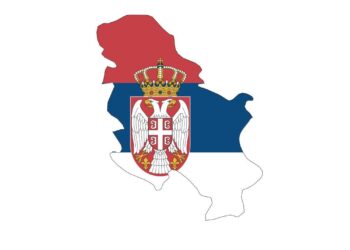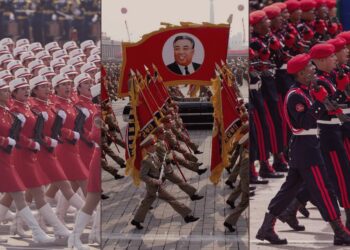Reviving Democracy in Serbia: Ancient Lessons in the Battle Against Authoritarianism
As Serbia grapples with a resurgence of authoritarian governance, the echoes of its historical struggles for democratic ideals resonate strongly. Once regarded as a symbol of hope within the Balkans, Serbia’s recent attempts to challenge oppressive leadership evoke memories of past grassroots movements that considerably reshaped its political landscape. This article delves into current initiatives aimed at dismantling authoritarian rule in Serbia, drawing valuable lessons from earlier uprisings that sparked meaningful political change. By analyzing nonviolent resistance strategies, we aim to offer insights not only for Serbia but also for other nations facing similar challenges.
Historical Perspectives: Mobilizing Against Autocracy
Serbia’s rich history of resistance movements provides essential insights for contemporary activists combating autocratic regimes. A notable instance is the Bulldozer Revolution of 2000, which demonstrated the strength found in collective action across diverse societal sectors—from students to workers—highlighting the importance of inclusivity within resistance efforts. By uniting around common grievances, these movements amplified their voices and fostered solidarity crucial for sustained activism. Key strategies identified during this transformative period include:
- Peaceful Protests: Nonviolent demonstrations garnered attention while minimizing potential backlash.
- Community Empowerment: Local organizations were encouraged to adapt their approaches based on specific community needs.
- Clever Messaging: Utilizing media platforms enabled rapid awareness and mobilization support.
Additionally, art and culture played a pivotal role in these movements; Serbian activists harnessed creative expressions such as street performances and visual art to convey powerful messages resonating with wider audiences.These innovative tactics not only educated citizens but also inspired collective action, illustrating how cultural engagement can significantly bolster political mobilization.| Main Insights| Description|
|——————-|—————-|
| Inclusivity | Engage various groups to strengthen movement foundations.|
| Creativity | Utilize artistic expression as an effective means to inspire and communicate messages.|
| Decentralization | Allow local entities flexibility in adapting strategies according to unique challenges.|
The Role of Grassroots Organizing in Political Transformation
Historically, grassroots organizing has been instrumental in empowering Serbians against authoritarian rule. From the significant Bulldozer Revolution through recent protests against government actions, citizen-led initiatives have demonstrated an remarkable ability to unite diverse groups under a shared cause through effective community engagement and strategic alliances that transcend conventional political boundaries.
Key elements contributing to accomplished grassroots efforts include:
- Youth Involvement: Young leaders have consistently driven initiatives using social media platforms as tools for raising awareness and mobilizing support.
- Cohesive Alliances: Effective organizing often entails forming broad coalitions encompassing various societal sectors like labor unions and civic organizations.
- Pledge for Nonviolence:The commitment towards peaceful protest methods has granted Serbian movements both legitimacy and broader public appeal.
Symbolic actions have proven notably impactful by fostering solidarity among participants while challenging authoritarian narratives—creating opportunities for citizens’ reflection on their governance structures.
| Influential Elements | Impact Description |
|————————–|————————|
| Media Coverage | Increases visibility while applying pressure on ruling authorities.|
| International Support | Offers resources while enhancing scrutiny over government actions.|
| Community Awareness | Empowers individuals with knowledge about their rights leading them toward active participation.|
Cultivating Solidarity: Nonviolent Approaches for Today’s Activists
The ongoing mobilizations within Serbia serve as a compelling reminder about the effectiveness inherent in solidarity combined with nonviolent resistance tactics.Activists worldwide can draw valuable lessons from Serbian successes—particularly emphasizing broad coalition-building efforts that engage diverse communities alongside civil society organizations which create formidable opposition against oppressive regimes.
Moreover, employing strategic nonviolent methods remains critical when confronting unjust power dynamics; techniques such as peaceful demonstrations or educational outreach campaigns emphasize moral superiority over aggression—a strategy worth emulating by modern activists seeking sustainable change through persistent engagement coupled with creative expression aimed at inspiring communities toward collective action.
A Forward Path Inspired by History
Reflecting upon current endeavors within Serbia reveals profound insights drawn from its historical context regarding effectively combating authoritarianism; past struggles illuminate unity’s significance alongside strategic resilience amid oppression’s challenges faced today by many societies worldwide striving anew for democratic freedoms.
As Serbians unite once more against autocratic forces—the global community watches closely—hoping these experiences may inform similar aspirations elsewhere pursuing justice and liberty amidst daily adversities faced across borders today! Ultimately this journey underscores how reclaiming agency through collective action could spark renewed discussions surrounding nonviolent resistance methodologies relevant now more than ever before!
















